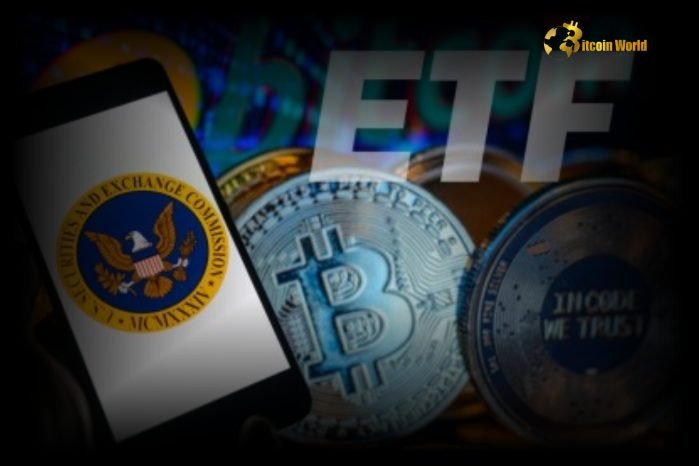Crptocurrency
Blockchain’s Role in ESG (Environmental, Social, Governance) Reporting

Understanding ESG Reporting and Its Challenges
ESG reporting allows companies to share their performance on issues like environmental impact, community involvement, and ethical governance. It has become increasingly vital as customers, investors, and regulators seek responsible business practices. But current reporting methods come with limitations:
- Complexity: ESG data comes from many sources and often lacks standardization.
- Transparency: Data can be difficult to trace, and some companies may exaggerate achievements.
- Verification: Validating data is often costly and time-consuming, leading to doubts about its accuracy.
These challenges make it tough for businesses to build genuine, trustworthy reports, and they expose gaps that blockchain technology is uniquely positioned to address.
How Blockchain Enhances ESG Reporting
Blockchain technology brings a few key strengths to ESG reporting, helping address the issues of transparency, traceability, and verification. Here’s how it works:
- Transparency and Decentralization: Blockchain’s decentralized ledger system ensures that information is recorded publicly and cannot be altered. This feature provides a transparent look at a company’s ESG data, which investors and the public can access and trust.
- Data Verification: With blockchain, companies can submit verified data entries that are tamper-proof. These records are distributed across multiple nodes, ensuring accuracy and preventing fraud.
- Efficient Reporting: Blockchain allows for real-time updates, reducing the delays and administrative work usually required for ESG reporting. This streamlines the process and makes it easier for companies to stay compliant with ESG standards.
Blockchain ESG: Examples and Benefits
Some industries are already exploring how blockchain can improve ESG reporting. Here are a few examples and benefits:
Industry |
Blockchain ESG Application |
Benefit |
Energy |
Renewable energy certificates (RECs) tracking | Ensures authenticity of eco-friendly claims |
Agriculture |
Tracking sustainable farming practices | Verifies eco-friendly sourcing |
Finance |
Green bond issuance transparency | Reduces greenwashing risk |
Supply Chain |
Monitoring of ethical labor practices | Ensures adherence to labor standards |
Benefits Breakdown:
- Improved corporate transparency: With Blockchain recording every transaction in real time, corporate transparency is enhanced by allowing stakeholders access to data that is accurate.
- Decentralized Reporting: Since Blockchain is decentralized, things are fair for companies because no company can selectively edit the data or show only positive indicators.
- Eco-friendly crypto-solutions: Even blockchain’s own environmental impact is being minimized with new, greener blockchain networks emerging, hence for the first time aligning technology with sustainability objectives.
Sustainable Blockchain and Eco-friendly Crypto
While blockchain has received much criticism due to the amount of energy it consumes, newer models of blockchains are focusing on how to reduce environmental impacts. This would prove important in the sustainability of blockchain for ESG reporting in that it would fall in line with the latter’s environment-related goals. Let’s dive into some of the ways in which this could happen:
- Proof of Stake Systems: PoS requires drastically less energy compared to the power-intensive PoW systems; thus, proving to be a much more sustainable option for ESG reporting on blockchain.
Cleaning up their processes, some blockchain networks already use renewable energy or mechanisms of carbon offsetting. The trend encourages the creation of eco-friendly crypto-solutions.
- Carbon Credits and Offsetting: The second way that blockchain might help with environmental sustainability is by making carbon credit trading easier, which would help companies offset their emissions more effectively.
Blockchain in Action: ESG Success Stories
Several companies and platforms are successfully using blockchain for ESG reporting. Here are some standout examples:
- IBM’s Food Trust: This blockchain platform traces food from farm to table, tracking sustainability metrics like water usage and pesticide levels.
- Everledger: A blockchain company focused on ethical sourcing, Everledger uses blockchain to track diamond origins, ensuring ethical mining practices.
- CarbonX: This blockchain-based platform allows users to offset their carbon footprints, offering tokenized carbon credits that consumers can buy or trade.
These examples show how blockchain not only supports ESG reporting but also enables new ways for companies to demonstrate their commitment to sustainability.
Challenges and Future of Blockchain in ESG Reporting
Despite its promise, blockchain technology in ESG reporting still faces challenges:
- Integration with Existing Systems: For blockchain ESG reporting to be truly effective, it needs to integrate smoothly with a company’s existing data systems.
- Regulatory Concerns: The lack of standardized regulations for blockchain ESG reporting can make compliance challenging for companies.
- Energy Consumption: While eco-friendly blockchain networks are developing, not all companies have switched to them, which raises sustainability concerns.
Looking forward, advancements in decentralized reporting tools and sustainable blockchain systems could address these issues. As more companies adopt blockchain for ESG, we’re likely to see new standards and regulations that make it easier to integrate blockchain across industries.
Is Blockchain the Future of ESG Reporting?
Blockchain has a lot of promise for use in ESG reporting. It can simplify the reporting process, lower fraud, and increase company transparency. Blockchain is becoming increasingly in line with sustainability objectives as eco-friendly cryptocurrency advances, which increases its allure for businesses looking to satisfy ESG standards.
However, businesses will need to overcome technological and regulatory obstacles before widespread adoption can occur. Blockchain offers a viable platform for companies aiming to take the lead in ESG to show their dedication to openness and moral behavior. Blockchain technology may eventually become the industry standard for ESG reporting as it develops further.
Blockchain provides a creative and dependable answer to ESG reporting, opening the door for a more transparent future, regardless of a company’s goals—tracking carbon offsets, verifying sustainable sourcing, or keeping an eye on ethical activities.
Crptocurrency
JP Morgan Analysts Expect Bitcoin and Gold Gains Under Trump Presidency

JP Morgan Analysts Expect Bitcoin and Gold Gains Under Trump Presidency
JP Morgan analysts, led by Nikolaos Panigirtzoglou, foresee a strong bullish outlook for gold and Bitcoin under President-elect Donald Trump’s administration, driven by what they term a “debasement trade” strategy. This approach aims to profit from anticipated currency devaluation and inflationary pressures, which typically benefit assets viewed as stable stores of value, including gold and Bitcoin. JP Morgan’s analysis suggests that continued demand for exchange-traded funds (ETFs), geopolitical uncertainties, and major Bitcoin acquisitions by companies like MicroStrategy will support this trend through 2025.
Key Drivers Behind JP Morgan’s Bullish Prediction
Several factors underpin JP Morgan’s expectation of gains for Bitcoin and gold in the upcoming years:
- Debasement Trade Strategy: The “debasement trade” benefits from policies that lead to currency devaluation, particularly during periods of expansionary fiscal policies. As the U.S. dollar loses value, investors often turn to hard assets like gold and Bitcoin to preserve purchasing power, positioning them as attractive hedges.
- Geopolitical Tensions and Trade Policies: Trump’s stance on trade tariffs and the possibility of increased geopolitical tensions could lead to further dollar devaluation, adding to the appeal of Bitcoin and gold as alternative assets.
- Rising Demand for Gold and Bitcoin ETFs: The analysts note significant demand for Bitcoin and gold ETFs since mid-2023, driven largely by retail investors. As institutional interest grows, these ETFs provide an accessible means of exposure, bringing fresh capital to both assets.
- MicroStrategy’s Bitcoin Acquisition Plans: MicroStrategy, a major corporate holder of Bitcoin, has announced plans to increase its holdings. This institutional investment, combined with favorable economic conditions, is expected to create upward pressure on Bitcoin’s price, signaling confidence among large-scale investors.
The Role of Gold and Bitcoin as Inflation Hedges
Both gold and Bitcoin are widely recognized as stores of value that can serve as inflation hedges. In periods of high inflation or economic uncertainty, investors tend to favor assets that are not directly tied to fiat currencies, making gold and Bitcoin particularly attractive. Here’s how each asset fulfills this role:
- Gold: Historically, gold has been a go-to asset during periods of inflation and currency devaluation. Its tangible, finite supply makes it a safe haven in times of economic instability, offering stability when other assets might be declining in value.
- Bitcoin: While relatively new, Bitcoin’s limited supply of 21 million coins positions it as a “digital gold” with deflationary characteristics. Investors increasingly view Bitcoin as an inflation hedge, especially as regulatory clarity and institutional interest grow.
How Trump’s Economic Policies Could Boost Gold and Bitcoin
Under Trump’s administration, certain economic policies could amplify demand for Bitcoin and gold. Here’s what JP Morgan analysts highlight as key areas of influence:
- Expansionary Fiscal Policies: Trump’s prior administration implemented tax cuts and expansionary measures that drove economic growth but also increased federal debt. If similar policies are enacted, they could result in inflationary pressures, driving up demand for assets like gold and Bitcoin as stores of value.
- Increased Tariffs and Geopolitical Uncertainty: Trade policies, particularly tariffs, can lead to currency instability. Bitcoin and gold could benefit as investors seek out assets with less exposure to fiat currency fluctuations and trade uncertainties.
- Support for Financial Innovation: Trump has previously expressed interest in fostering innovation within the financial sector, which may include support for cryptocurrency regulation. A regulatory environment that favors digital assets could encourage institutional investment, further supporting Bitcoin’s price growth.
Growing ETF Demand Signals Institutional Interest
The report also highlights the impact of ETF demand on Bitcoin and gold prices. The introduction of ETFs for both assets has allowed a broader range of investors to participate in these markets, bringing liquidity and stability. Key points include:
- Retail Investor Demand: Since mid-2023, retail interest in ETFs has surged, particularly for Bitcoin ETFs. These products provide convenient and regulated access to Bitcoin, fueling demand and adding stability to its market.
- Institutional Adoption of Bitcoin ETFs: With major players like BlackRock and Fidelity entering the Bitcoin ETF market, institutional adoption is likely to increase, encouraging further investments. ETFs lower the entry barrier for large investors and hedge funds, contributing to Bitcoin’s mainstream acceptance.
MicroStrategy’s Bitcoin Strategy and Institutional Confidence
MicroStrategy has been one of the most vocal institutional supporters of Bitcoin, holding significant amounts of BTC on its balance sheet. The company’s plans for continued Bitcoin acquisitions reflect a broader trend of institutional confidence in Bitcoin as an asset class:
- Corporate Bitcoin Holdings: By increasing its Bitcoin reserves, MicroStrategy is signaling confidence in Bitcoin’s long-term value, potentially inspiring other companies to follow suit. This institutional buy-in could stabilize Bitcoin’s price and encourage broader adoption.
- Market Influence: MicroStrategy’s Bitcoin holdings influence market sentiment, as its public commitment to Bitcoin boosts investor confidence and supports a long-term bullish outlook.
Risks to JP Morgan’s Prediction
While JP Morgan’s outlook is optimistic, analysts have identified potential risks that could impact Bitcoin and gold’s performance:
- Regulatory Changes: Shifts in U.S. regulatory policy, particularly around digital assets, could introduce volatility to Bitcoin’s price. Strict regulations could dampen institutional participation and ETF demand, slowing Bitcoin’s growth.
- Economic Policy Reversals: If Trump’s administration implements policies that strengthen the dollar, such as reducing tariffs or prioritizing economic stability, the demand for Bitcoin and gold as inflation hedges may decrease.
- Market Volatility: Bitcoin’s inherent volatility remains a consideration for investors. Market corrections could impact short-term performance, even with strong long-term fundamentals.
Conclusion
JP Morgan’s analysis underscores a favorable outlook for Bitcoin and gold under Trump’s presidency, with expectations that inflationary policies, rising ETF demand, and strategic acquisitions by firms like MicroStrategy will drive these assets’ growth. The “debasement trade” strategy, geared toward profiting from currency devaluation, supports this trend by encouraging investment in assets seen as stores of value during economic uncertainty.
If these factors align, Bitcoin and gold could experience significant gains in the coming years, with Bitcoin’s expanding role as a digital store of value potentially setting new price benchmarks. For investors, this forecast highlights the strategic value of these assets within a diversified portfolio, particularly as the economy navigates potential inflation and currency pressures.
For further insights on Bitcoin, gold, and inflationary trends, explore our latest market analysis on investment strategies and asset performance under shifting economic policies.
Disclaimer: The information provided is not trading advice, Bitcoinworld.co.in holds no liability for any investments made based on the information provided on this page. We strongly recommend independent research and/or consultation with a qualified professional before making any investment decisions.
Crptocurrency
Bitcoin Price Sets Sights On $500,000, Pushes This Solana Killer For 80,000% Returns In The 2025 Bull Run

Crptocurrency
U.S. Spot Bitcoin ETFs See $621.9 Million Net Inflows, Reversing Recent Outflow Trend

-

 Startup Stories1 year ago
Startup Stories1 year agoWhy Millennials, GenZs Are Riding The Investment Tech Wave In India
-

 Startup Stories1 year ago
Startup Stories1 year agoStartups That Caught Our Eyes In September 2023
-

 Startup Stories1 year ago
Startup Stories1 year agoHow Raaho Is Using Tech To Transform India’s Fragmented Commercial Trucking
-

 Startup Stories12 months ago
Startup Stories12 months agoMeet The 10 Indian Startup Gems In The Indian Jewellery Industry’s Crown
-

 Crptocurrency8 months ago
Crptocurrency8 months agoLither is Making Crypto Safe, Fun, and Profitable for Everyone!
-

 Startup Stories1 year ago
Startup Stories1 year agoHow Volt Money Is Unlocking The Value Of Mutual Funds With Secured Lending
-

 Startup Stories1 year ago
Startup Stories1 year agoWhy Moscow-Based Kladana Considers Indian SME Sector As The Next Big Market For Cloud Computing
-

 E-commerce1 year ago
E-commerce1 year agoTop Online Couponing Trends To Watch Out For In 2016




